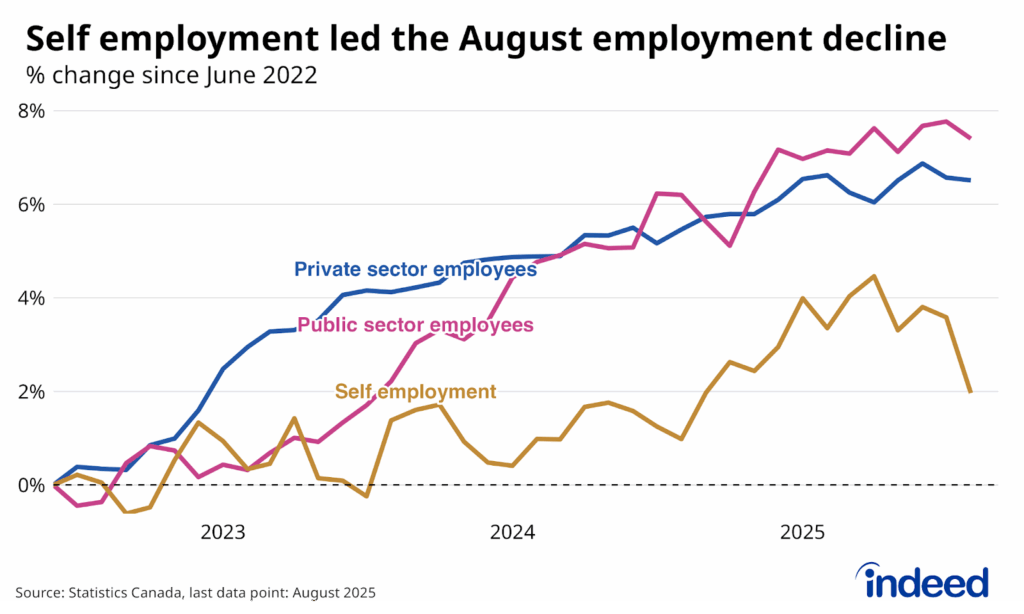A bad miss. While the Canadian job numbers have been quite volatile this year, other drops, including July’s, had often followed strong gains, helping keep the broader trend steady. This August was different. Employment posted its worst loss of 2025, pushing the unemployment rate up to 7.1%, the highest it’s reached this cycle, after lingering around 6.9% since late 2024. Hours worked were flat, in part because job losses were concentrated in part-time roles.
There were pockets of weakness throughout the August numbers. One came from self-employment, which accounted for over half the net decline, although the ranks of private and public sector employees also slipped. Meanwhile, trade-exposed industries — like manufacturing, transportation, and natural resources — all fell after holding relatively steady since May. However, other areas, like professional and technical services, as well as education, took hits too.

Following mixed signals from the LFS data throughout 2025, the August numbers are the clearest signal that the job market has stalled. The number of people working is down slightly since the start of the year, while the population, according to the LFS, is up. And while some of this weakness represents the trade war’s shock to the system, evident in the jump in Windsor-area unemployment, other challenges facing the Canadian labour market — like the difficulty of finding new work among those unemployed — have continued to build off of last year’s trends.


